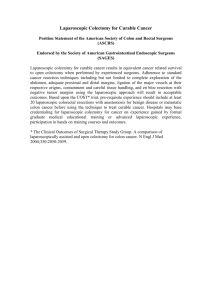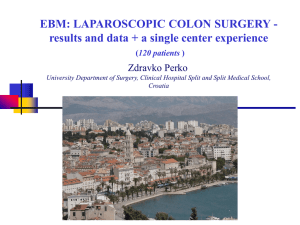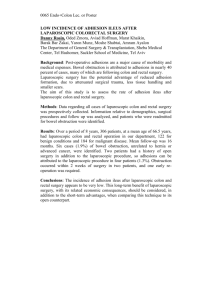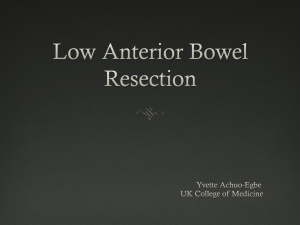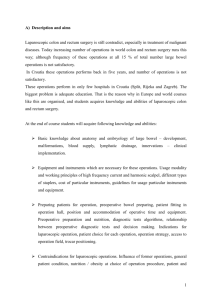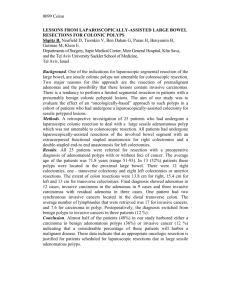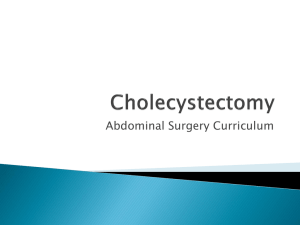Purpose: To assess the clinical outcome and true morbidity of
advertisement
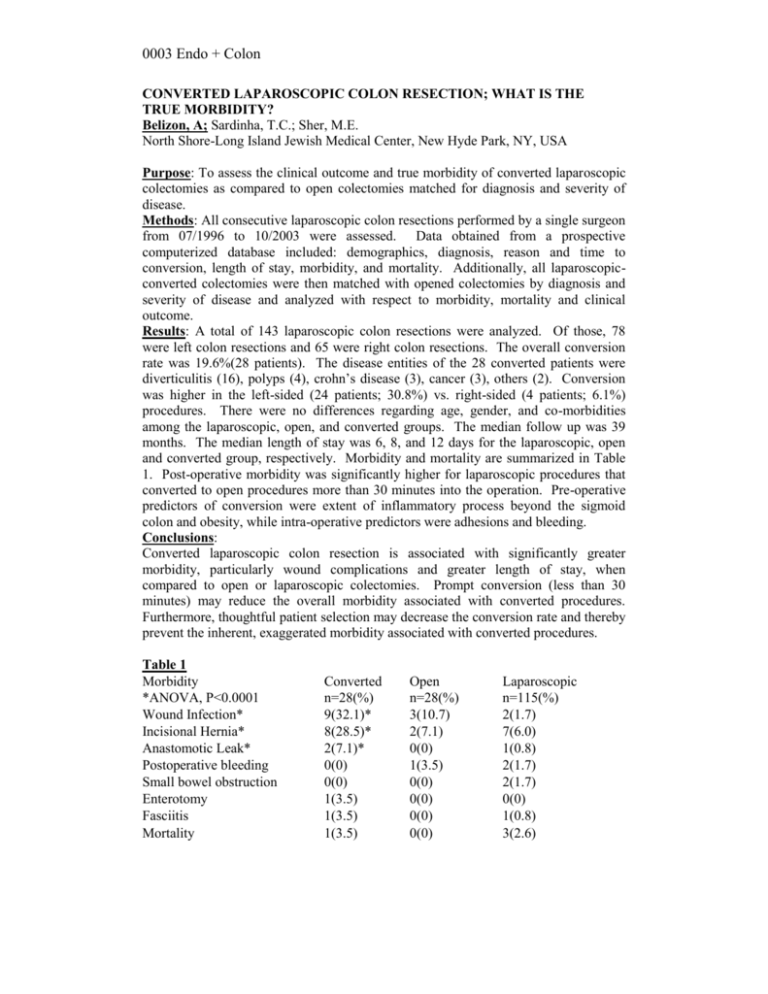
0003 Endo + Colon CONVERTED LAPAROSCOPIC COLON RESECTION; WHAT IS THE TRUE MORBIDITY? Belizon, A; Sardinha, T.C.; Sher, M.E. North Shore-Long Island Jewish Medical Center, New Hyde Park, NY, USA Purpose: To assess the clinical outcome and true morbidity of converted laparoscopic colectomies as compared to open colectomies matched for diagnosis and severity of disease. Methods: All consecutive laparoscopic colon resections performed by a single surgeon from 07/1996 to 10/2003 were assessed. Data obtained from a prospective computerized database included: demographics, diagnosis, reason and time to conversion, length of stay, morbidity, and mortality. Additionally, all laparoscopicconverted colectomies were then matched with opened colectomies by diagnosis and severity of disease and analyzed with respect to morbidity, mortality and clinical outcome. Results: A total of 143 laparoscopic colon resections were analyzed. Of those, 78 were left colon resections and 65 were right colon resections. The overall conversion rate was 19.6%(28 patients). The disease entities of the 28 converted patients were diverticulitis (16), polyps (4), crohn’s disease (3), cancer (3), others (2). Conversion was higher in the left-sided (24 patients; 30.8%) vs. right-sided (4 patients; 6.1%) procedures. There were no differences regarding age, gender, and co-morbidities among the laparoscopic, open, and converted groups. The median follow up was 39 months. The median length of stay was 6, 8, and 12 days for the laparoscopic, open and converted group, respectively. Morbidity and mortality are summarized in Table 1. Post-operative morbidity was significantly higher for laparoscopic procedures that converted to open procedures more than 30 minutes into the operation. Pre-operative predictors of conversion were extent of inflammatory process beyond the sigmoid colon and obesity, while intra-operative predictors were adhesions and bleeding. Conclusions: Converted laparoscopic colon resection is associated with significantly greater morbidity, particularly wound complications and greater length of stay, when compared to open or laparoscopic colectomies. Prompt conversion (less than 30 minutes) may reduce the overall morbidity associated with converted procedures. Furthermore, thoughtful patient selection may decrease the conversion rate and thereby prevent the inherent, exaggerated morbidity associated with converted procedures. Table 1 Morbidity *ANOVA, P<0.0001 Wound Infection* Incisional Hernia* Anastomotic Leak* Postoperative bleeding Small bowel obstruction Enterotomy Fasciitis Mortality Converted n=28(%) 9(32.1)* 8(28.5)* 2(7.1)* 0(0) 0(0) 1(3.5) 1(3.5) 1(3.5) Open n=28(%) 3(10.7) 2(7.1) 0(0) 1(3.5) 0(0) 0(0) 0(0) 0(0) Laparoscopic n=115(%) 2(1.7) 7(6.0) 1(0.8) 2(1.7) 2(1.7) 0(0) 1(0.8) 3(2.6)
